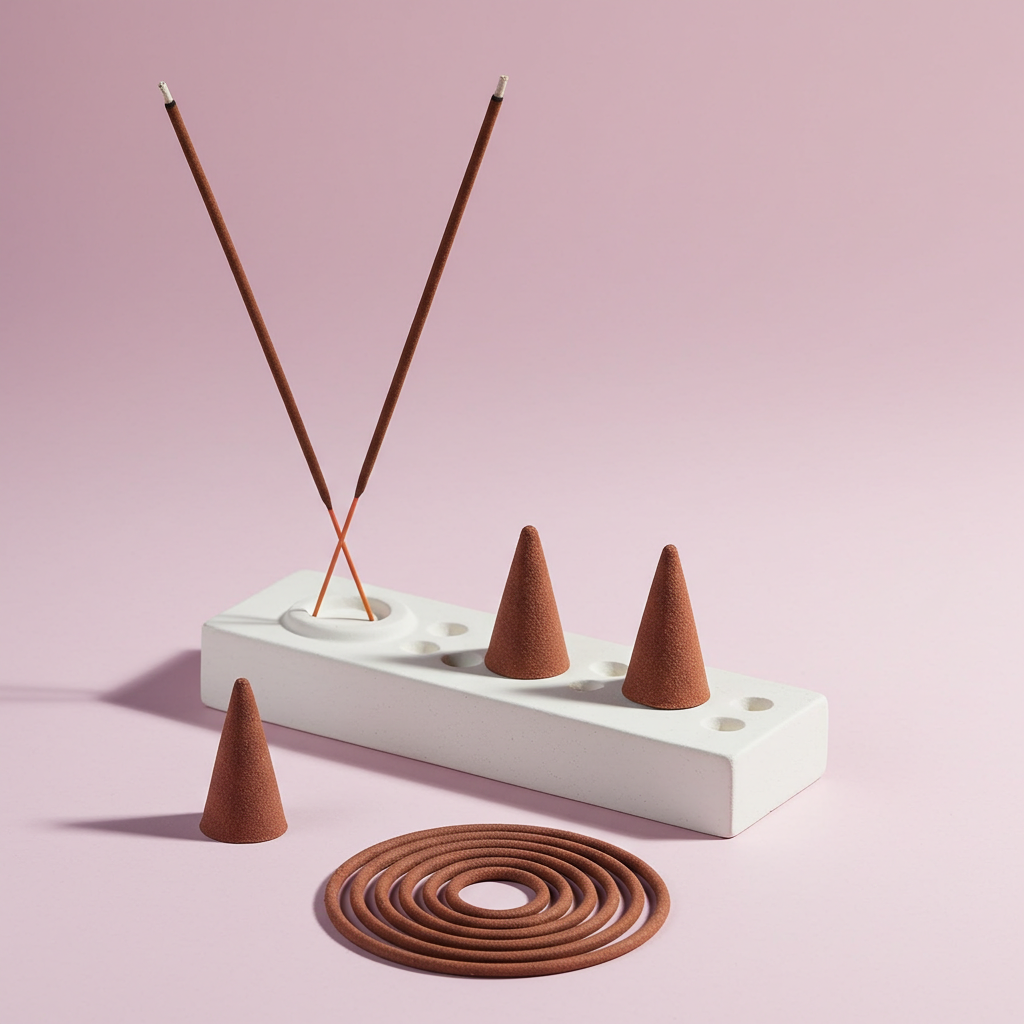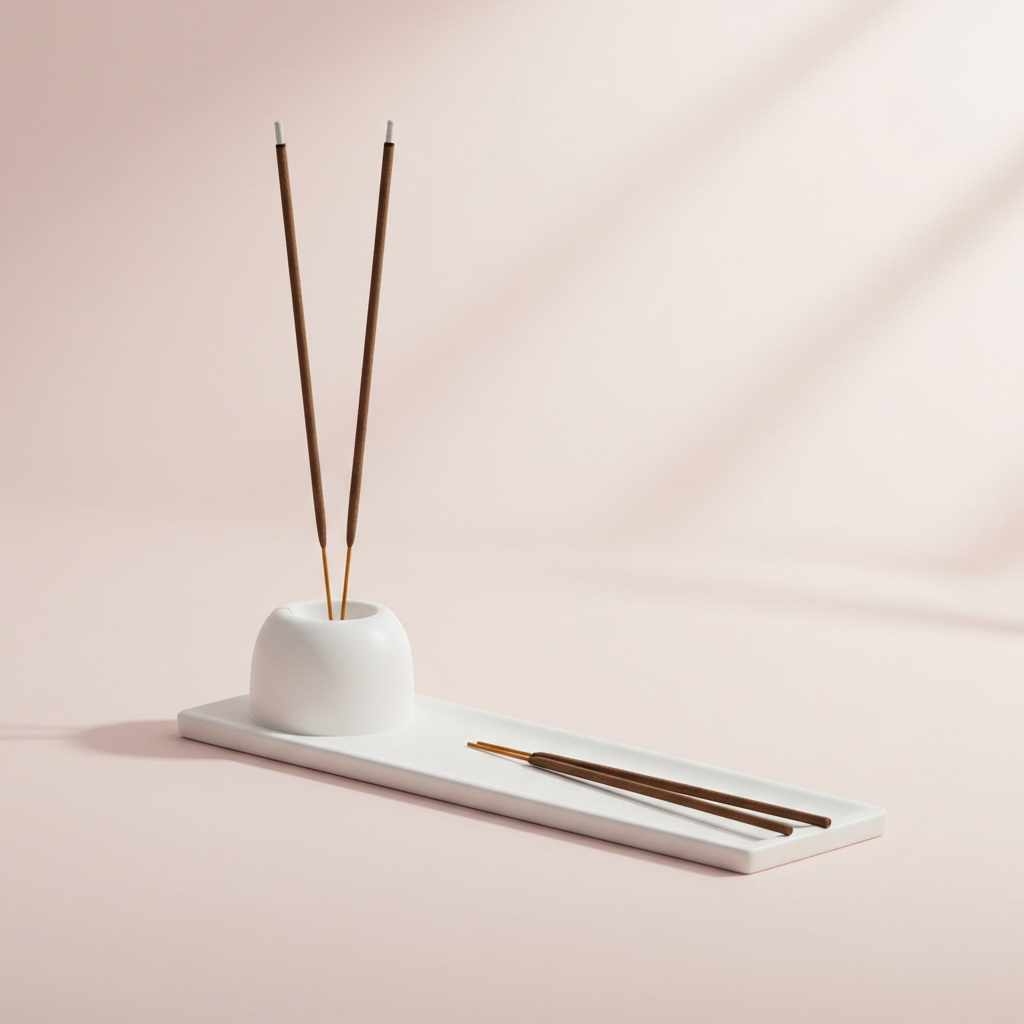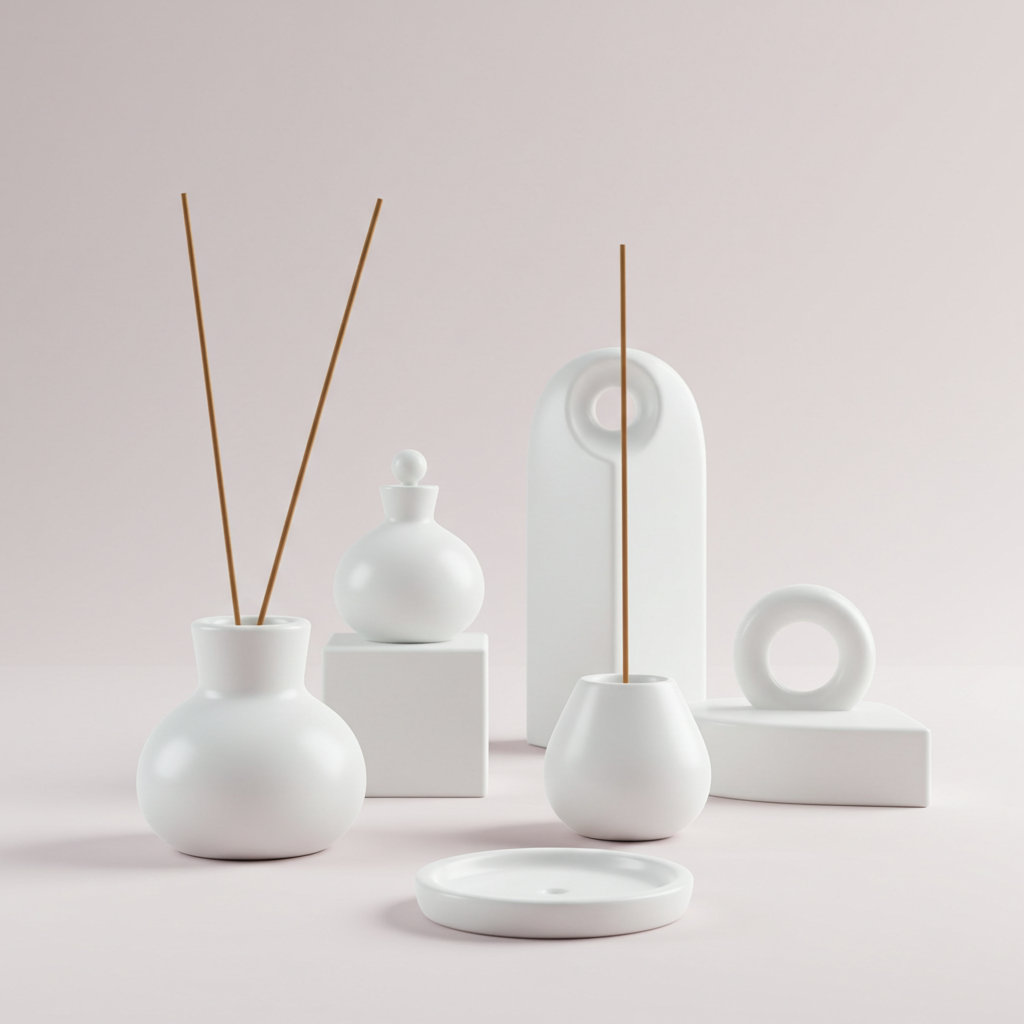
The Quiet Revolution: Incense and Headaches
How to Burn Safely to Avoid Irritation
The sight of slender incense sticks releasing delicate ribbons of fragrance has been a timeless symbol of peace, meditation, and spiritual practice in Singapore and across the globe. From the deep, woody scent of Sandalwood to the vibrant notes of Sweet Floral, the power of incense to transform a space is undeniable.
Yet, for many—especially those living in modern, often smaller spaces with limited airflow—the burning question remains: Why does my incense sometimes give me a headache?
At SKG Trading (www.skgtradingsg.com), your trusted source for high-quality Singapore incense, we believe you shouldn't have to choose between a beautiful aroma and a comfortable, irritation-free experience. The good news is that most discomfort is not an inevitable side effect of incense, but rather a solvable issue of air quality and burning technique.
This definitive, in-depth guide is your modern manifesto for safe burning. We will dive into the science of smoke, reveal professional-level ventilation hacks perfect for Singapore homes, and introduce you to the quiet revolution of Low Smoke Bamboo Stick Incense that is changing the game for sensitive users.
Part 1: Decoding the Discomfort—The Science of Incense Smoke
Understanding what happens when an incense stick burn is the first step toward a headache-free ritual. When you light an incense stick, you initiate a process of combustion that releases two main types of air pollutants: fine particles and gaseous irritants.
The Particulate Matter (PM) Problem
The visible smoke cloud is composed of tiny airborne particles, known as Particulate Matter (PM). Scientific studies on indoor air quality have shown that incense burning produces a significant amount of fine PM, often compared to or even exceeding emissions from other common household sources (Incense smoke: Clinical, structural and molecular effects on airway disease - PMC: https://www.ncbi.nlm.nih.gov/pmc/articles/PMC2377255/).
-
The Irritation Pathway: When inhaled, these fine particles can irritate the mucous membranes in the nose, throat, and eyes. This inflammation and direct irritation of the respiratory system can easily manifest as congestion, sneezing, or a painful tension headache.
-
Respiratory Sensitivity: For individuals with pre-existing conditions like asthma or chronic allergies, this particulate matter can be a significant trigger. Health practitioners often advise improved ventilation and limiting exposure, as heavy incense smoke has been linked to respiratory dysfunction (Incense May Raise Risk of Respiratory Issues - Respiratory Therapy: https://respiratory-therapy.com/disorders-diseases/chronic-pulmonary-disorders/asthma/incense-may-raise-risk-respiratory-issues/).
The Olfactory Overload: Gaseous Irritants
Beyond the particles, the concentrated aroma itself can be a potent headache trigger for a significant portion of the population.
-
Volatile Organic Compounds (VOCs): The fragrance molecules are a mix of natural and sometimes synthetic VOCs. In high concentrations, these can overstimulate the trigeminal nerve, which is closely linked to headache and migraine pathways.
-
The Scent-Sensitive Brain: People who experience migraines often suffer from osmophobia, an intense sensitivity to strong smells. For them, a powerful burst of concentrated fragrance—like that from unventilated Rose or Jasmine incense—can directly trigger an attack. As noted in medical reports, strong odours can be a significant migraine trigger (Are Your Migraine Attacks Triggered by Smells Like Perfume? How to Cope - Migraine Again: https://www.migraineagain.com/dont-inhale-toxic-smells-that-are-migraine-triggers/).
The Simple Truth: A smaller amount of cleaner smoke, well-dispersed, is the formula for a comfortable experience.
Part 2: The Safe Burner’s Masterclass—8 Rules for Optimal Airflow
Your mission is to find the perfect equilibrium: enough fragrance to enjoy, but enough fresh air to disperse the irritants. Here are the top strategies used by seasoned incense lovers in compact living environments.
Rule 1: Master the Ventilation Loop (The Non-Negotiable)
Forget burning incense in a fully closed room. The most critical step in safe burning is ventilation.
-
The Cross-Breeze Hack: Open two points in your home—a window or door in the room where the incense is burning, and another point on the opposite side of the house. This creates a gentle, continuous draught that pulls the air across the room and out. This passive airflow is safer and more effective than blasting the air-conditioning.
-
The 15-Minute Rule: You don't need to burn an entire stick. Light your incense for 10–15 minutes until the room is lightly scented, then extinguish it immediately (douse the glowing tip in sand). The lingering fragrance will remain, but the active smoke production will stop, drastically reducing particulate buildup.
Rule 2: Embrace the Revolution: Low Smoke Incense Sticks
The material composition of your incense is the primary factor in smoke output. Modern, high-quality alternatives have virtually solved the smoke problem.
-
The Difference: Traditional incense sticks often use a thick core and heavy binders that produce a dense, grey smoke. Our specialty lines use finer wood powders and natural binders, resulting in a cleaner, less visible burn.
- SKG Trading’s Low-Smoke Champions:
-
Sandalwood Bamboo Stick Incense (Smokeless): Perfect for the Sandalwood enthusiast who needs minimal smoke output. A favourite for bedroom use.
-
Mild Woody Scent Bamboo Stick Incense (Smokeless): Offers a subtle, soothing aroma with barely-there smoke, ideal for those with respiratory sensitivity.
- Our range of Low Smoke Bamboo Stick Incense in Agar-sandalwood, Cedarwood, and Woody Scents offers the complex, grounding fragrances you love, without the thick plume.
Rule 3: Maintain a Safe Distance from the Smoke Plume
Where you place the incense matters for your health.
-
Placement Strategy: Place your incense stick burner far from where you are seated or standing. Ideally, place it near the point of exhaust (the slightly open window). This ensures the fragrance molecules are gently diluted before they reach your respiratory space.
-
Avoid Direct Inhalation: Never lean over the burning incense. The highest concentration of smoke and VOCs is right at the tip.
Rule 4: Choose Your Scents Wisely Based on Sensitivity
Some scents are inherently heavier or contain more volatile compounds than others. Listen to what your body tells you.
|
Scent Category |
SKG Trading Option |
Best for |
Risk Profile |
|
Grounding/Mild |
Sandalwood - Made in Singapore, Mild Woody Scent |
Meditation, Daily Calm, Office Use |
Low-Medium (Choose low-smoke if sensitive) |
|
Aromatherapy |
Sleep, Stress Relief, Relaxation |
Medium (Less smoky than pure florals) |
|
|
Vibrant/Floral |
Jasmine, Rose, Sweet Floral - Made in Singapore |
Atmosphere Setting, Rituals, Mood Lift |
Higher (Fragrance is more concentrated; use with maximum ventilation) |
|
Unique/Herbal |
Cleansing, Refreshing the Space |
Medium |
If you know a strong floral scent triggers you, use the floral scents in larger, well-ventilated rooms, or switch to the soothing, gentle scent of Sandalwood for closer proximity.
Rule 5: Utilize Ash and Incense Burners Correctly
A proper burner is a non-negotiable part of a safe ritual.
-
Heat Resistance: Always use a stable, heat-resistant ceramic or metal burner to collect the ash and prevent fire hazards (Incense Safety Instruction - Naathi: https://www.naathi.com/pages/incense-safety-instruction).
-
Ash is Your Friend: The ash itself is a great insulator. If you are using bamboo-less sticks (like Japanese styles), a bowl filled with ash or sand is the best way to hold and extinguish the stick safely.
Rule 6: Integrate an Air Purifier
In a modern home, an air purifier is a valuable tool for incense enthusiasts.
-
HEPA Filtration: An air purifier with a HEPA filter can capture the fine particulate matter (PM2.5) released by the burning incense, essentially cleaning the air after the fragrance has been released. Run the purifier on a low setting during and after your session for optimal air quality.
Rule 7: The Outdoors Option (Balcony Bliss)
If you are extremely sensitive, or if you plan to burn multiple incense sticks for a longer period (such as during a deep religious ceremony), move the ritual outside.
-
Balcony or Patio: Burning incense on a balcony or near an open service yard allows you to enjoy the aroma without compromising the air quality inside your main living space.
Rule 8: Never Leave Burning Incense Unattended
This is a fire safety issue that applies to all ages and genders. Never light an incense stick and leave the room, and certainly never go to sleep while it is burning. Always ensure the glowing tip is completely extinguished before disposing of the ash or leaving your home.
Part 3: SKG Trading—The Low-Smoke Incense Singapore Locals Trust
Choosing the right incense is half the battle. At SKG Trading, we understand the unique demands of the Singapore environment—small spaces, high humidity, and the need for clean, authentic fragrance. Our product line is curated to offer traditional quality with modern comfort.
|
SKG Trading Product |
Key Features for Sensitive Users |
Best Use Case |
|
Sandalwood - Made in Singapore |
Classic, comforting scent. Authentic Singapore-made quality. |
Daily rituals, traditional use. |
|
Sweet Floral - Made in Singapore |
Beautiful, locally-made floral blend. |
Refreshing the living room, special occasions. |
|
Sandalwood Bamboo Stick Incense (Smokeless) |
Minimal smoke output. Pure Sandalwood aroma. |
Bedrooms, small HDB/Condo rooms, highly sensitive users. |
|
Mild Woody Scent Bamboo Stick Incense (Smokeless) |
Gentle, earthy fragrance. Drastically reduced particulate matter. |
Office use, deep meditation, continuous background scent. |
|
Low Smoke Bamboo Stick Incense (Agar-sandalwood, Cedarwood, etc.) |
Advanced low-smoke technology. Complex, rich scents without the smoke. |
When you want an exotic scent but need maximum cleanliness. |
By opting for our Low Smoke or Smokeless Bamboo Stick Incense, you are actively choosing a cleaner burning experience, which directly mitigates the primary causes of incense-related headaches and irritation. It’s a smart choice for modern living.
Part 4: Beyond the Burn—The Holistic Benefits of Incense
Once you master the art of safe burning, you unlock the profound benefits of incense that generations have enjoyed. The aroma of a well-chosen incense stick is a simple, powerful tool for mental and emotional well-being.
-
Anxiety and Stress Reduction: Scents like Lavender and Sandalwood are known for their calming effects. The ritual of lighting the incense and watching the smoke can be a mindful anchor, reducing stress and promoting a state of tranquillity.
-
Enhanced Focus and Meditation: Traditional scents like Agar-sandalwood and Cedarwood have long been used to clear the mind and deepen concentration, making them perfect companions for study or yoga sessions.
-
Home Cleansing: Whether for spiritual reasons or simply masking an unpleasant odour, an incense stick quickly and naturally freshens the air, leaving behind the invigorating scent of Pomelo Leaf or the gentle aroma of Lotus.
This isn't just about selling incense; it's about enabling a positive, comfortable lifestyle through mindful use. By prioritizing quality and safety, you ensure this ancient ritual remains a source of joy.
Conclusion: Burn Brighter, Not Harder
Headaches and irritation are not a mandatory part of enjoying incense. By implementing superior ventilation, choosing high-quality, low smoke incense sticks—especially the innovative selections we offer at SKG Trading SG—and managing your burn time, you can elevate your ritual to a truly restorative practice.

Ready to experience the pure aroma of the finest Singapore incense without the worry?
Visit SKG Trading at www.skgtradingsg.com today to find your perfect low-smoke, high-fragrance solution. Embrace the quiet revolution and enjoy your sanctuary, one perfectly scented moment at a time.




